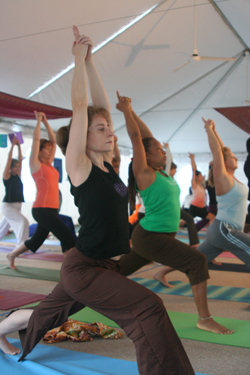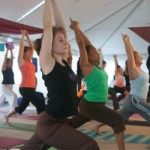As we rush around in our busy, modern life, most of us are completely disconnected from our bodies. We eat when we are not hungry, we stay awake while our bodies beg for sleep and we ignore aches and pains or cover them up with whatever pain killer is close at hand. We bemoan, vocally or not, the state of our bodies as too fat, too thin, too weak, too old, too ugly, too unworthy of love. Often the response to all of this is to “Whip it into shape!” or “No pain, no gain!” or “Where there is no struggle, there is no strength.” Does any of this sound familiar?
These bodies of ours, whether we like them or not, are with us 24 hours a day, 7 days a week and 365 days a year. Shouldn’t we treat our bodies as our best friend rather than heap disdain upon them? Would you ever go to your best friend and try to whip them into shape? Of course you wouldn’t do that and yet, so often, we all do exactly that to our own bodies and so we become completely disconnected from them.
Unlocking the Door
Breath and Pranayam are the key to Amrit Yoga’s Stage I practice. They begin to unlock and reconnect us to our own body. We feel the breath moving in through the nostrils and filling the lungs. We feel the movement of the belly and the lift of the ribs as we inhale and then the drop of the ribs and belly pulling in as we exhale. By reconnecting body and mind, breath unlocks the door of the body.
They begin to unlock and reconnect us to our own body. We feel the breath moving in through the nostrils and filling the lungs. We feel the movement of the belly and the lift of the ribs as we inhale and then the drop of the ribs and belly pulling in as we exhale. By reconnecting body and mind, breath unlocks the door of the body.
If breath unlocks the body, it is Asana that opens it. After spending most of our lives learning to ignore bodily sensation—when was the last time you felt your socks on your feet after you first put them on?—we can easily bring that same attitude into our postures and actually cause injury. If, however, we listen closely to the body by feeling sensations rather than ignoring them, we keep the body safe and throw the door wide open.
Pressing, Extending and Prana
Stage I uses some very specific tools to help strengthen the connection to the body. You’ll note that each Monday as I post about a specific Asana the illustration and my writing describe press points, extensions and energetic extensions. Press points create a solid foundation for the pose. Extensions provide stability and a direction to the pose. The energetic extension describes the movement of Prana, energy, through the pose. It also draws the body into proper alignment for the posture.
Mini Experiment:
Stand up, press down into your feet as you inhale and extend your arms straight overhead. Do you feel like you are moving upward? Of course you do because you are! That sensation of upward movement is the energetic extension in motion. The feet provide a stable foundation. The extended arms draw the whole body upward and continuing to extend out the fingers holds the body in proper alignment.
Now, repeat the experiment but exhale as you press into the feet and extend the arms. Did you feel a sensation pulling against your arms as they went up that time? Prana is moving but now it’s moving against the direction of the energetic extension of the body. Here is a simple way to remember how to breathe so breath encourages the extension rather than works against it: Inhale as the sternum is extended away from the navel. Exhale as the sternum is contracted toward the navel.
Spend some time over the next few days simply focusing on breath and how it moves the body. As you practice, notice how breath and body work together without any effort. You will likely find that you already breathe in as the body extends and breathe out as it contracts. Begin to allow yourself to feel all the sensations that arise in your body. As you do this, the mind might start trying to get everything perfect. Stay focused on breath with press points, extensions and the energetic extension and let go of perfection. Your poses will align properly for your body and you will receive maximum benefit from your sadhana.
Jai Bhagwan

